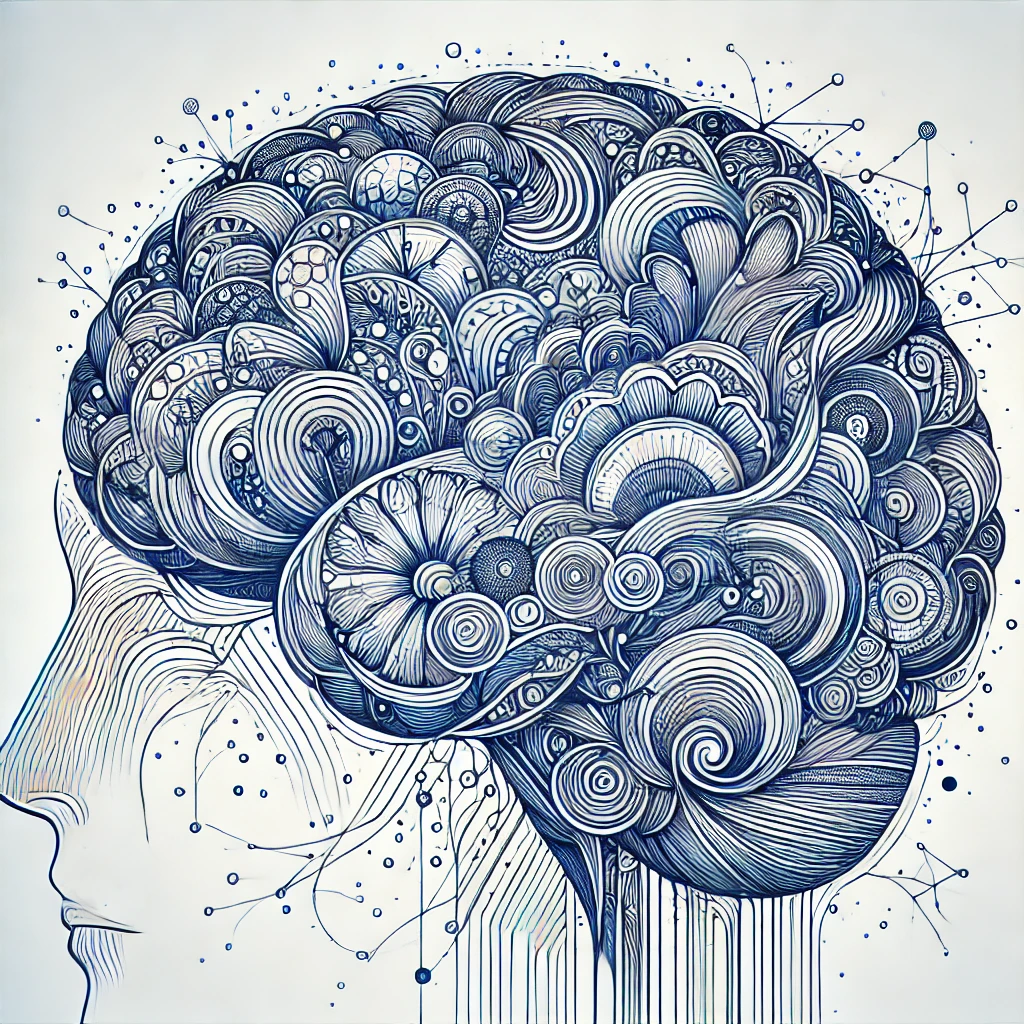Winter 2025
Diverse Minds: What We Know and Don’t Know About Psychiatric Disorders and Dementias 1
Course Description
This course explores the diversity of the human brain, offering a comprehensive introduction to the complex interactions between brain structure, function, and behavior. The goal is to focus on a broad spectrum of psychiatric conditions (such as depression, anxiety, schizophrenia, and bipolar disorder) alongside neurodegenerative diseases like Alzheimer’s. The course will dive into what modern neuroscience and psychiatry have uncovered about these conditions, as well as the gaps that remain in our understanding. Given this diversity of topics, we expect this to be a multiple-part series.
Registration Link
Course Goals

The goal of this course is not to provide medical advice (I am far from a clinician). Rather, the goal of this course is to have fruitful discussions surrounding what we know about when the brain goes awry, how and why diseases or disorders have been studied in certain ways, the benefits of basic research and how it interacts with clinical trials, and how advancements in our understanding of brain disorders can lead to better treatments, improved care, and a maybe more compassionate approach to individuals living with these conditions.
The goal of this online guide is to provide support to what we will discuss each week in class. I will adapt the website based on our discussions so that this can be a reference for you down the line.
Note: I developed this course in late 2024, incorporating research that came out in the last couple years.
Why this course?
This course was inspired by Karl Herrup’s book How to Not Study a Disease: The Story of Alzheimer’s (link to a podcast where the author discusses the book). In this book, Dr. Herrup provides some wonderful and highly opinionated context on how and why Alzheimer’s has not been “solved”, highlighting how to build a hypothesis for the disease, limitations in the current hypotheses for AD, and how by rooting ourselves in one earlier hypothesis, we are unable to move forward towards developing another cure. The brain is an incredibly complex organ—not just in its biological structure but in the thoughts, emotions, and behaviors it generates, often referred to as the mind. Understanding brain disorders requires us to look beyond how specific neurons or regions become diseased and consider how these changes affect the behaviors and functions they support. Moreover, behaviors like memory, speech, or navigation are not governed by single brain regions in isolation; they rely on intricate networks of neural systems working in coordination. As a result, both the causes of these disorders and their potential solutions are far more complex than addressing a single malfunctioning hormone, neuron or region.
Though it may seem obvious, too often, these incredibly nuanced diseases and disorders are oversimplified as if a “one-size-fits-all” solution could exist. This reductionist thinking underestimates the intricate interplay of biology, environment, and behavior involved. This course is also a learning opportunity for me! It’s through this shared exploration that we can better understand the gaps in our knowledge and approach these disorders with (hopefully) the nuance they demand.
To emphasize, the brain is complicated!
0. Basics
1. Alzheimer’s Disease
- Comparing dementias 👉 Click me!
2. Parkinson’s Disease
3. Depression
4. PTSD
- Comparing PTSD and Depression 👉 Click me!
5. Schizophrenia
6. Further reading suggestions
Additional pages introduced by class discussions:
1. Epigenetics and trauma
2. Dementias and end of life care
3. Brain clean-up
All materials © Clara Sava-Segal, 2025. Designed for Dartmouth Osher Lifelong Learning Center.